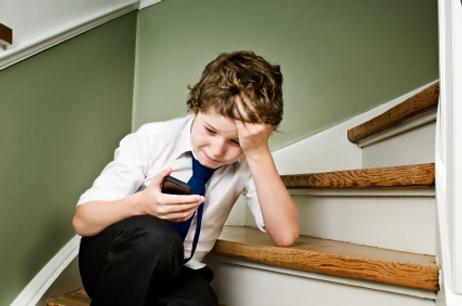Tragic bullying cases like Phoebe Prince’s story have prompted public schools to review their responsibility in preventing bullying, both on and off-campus. With the rise of social networking, cyberbullying has become a real threat, and schools are scrambling to manage the ramifications of 2.0 bullying.
According to the , cyberbullying can be defined as, "willful and repeated harm inflicted through the use of computers, cell phones, and other electronic devices." The First Amendment Center cites statistics that show one-third of teens on the Internet have experienced harassment online. The dub electronic aggression as an "emerging adolescent health issue."
This video from the PACER Center offers resources for students and teachers.
Clearly, there is no doubt that cyberbullying has become a major problem in recent years, but the question then becomes: what should public schools do about it? It does not appear to be a question with an easy answer if one considers the differing responses to the problem by public schools and the government.
On one hand, when cyberbullying affects a child's educational experience, the schools have a responsibility to put a stop to the behavior. On the other hand, much of the cyberbullying that occurs takes place outside of school, leaving schools helpless in monitoring such activity. Then, there is the first amendment guarantee of free speech. Where do we draw the line?
This video looks at how cyberbullying affects students.
The Unique Concern over Cyberbullying
Bullies have been in existence as long as public schools, so why is there a specific concern over online bullying tactics? Some of the unique features of cyberbullying include:
- Widespread harassment, as online bullying can reach a much larger audience
- Harassment follows a student home on websites like Facebook and MySpace
- Bullies are emboldened due to the perceived sense of anonymity that allows them to speak even more cruelly and encourages others to get in on the harassment
- Uncertainty from parents and schools over how to address the issue
The unique nature of cyberbullying has led many school districts and local governments to come together with parents and students in search of the best solutions to the problem. However, answers don't come easy with no preformed path to use as a model.
A Growing Problem
Despite the uncertainty over how to address the problem of cyberbullying, the issue isn't showing signs of going away on its own. In fact, cyberbullying appears to be on the increase in many districts today. A report in the states that schools and local officials in the area are receiving more calls by parents and students with complaints about bullying tactics. A similar report on says that school officials in the city have been receiving several cyberbullying complaints.
In addition to the growing numbers of cyberbullying complaints, the intensity of the behavior may be on the rise. Some students have transferred schools after the bullying simply became too widespread to deal with any longer. There have even been reports of student suicides that have been linked to various bullying tactics, including cyberbullying. Â鶹ąű¶ł´«Ă˝ly published research by the found that students who were victims of cyberbullying were almost twice as likely to have attempted suicide, compared to those who had not experienced cyberbullying.
This video offers strategies for educators in dealing with cyberbullying.
What Schools are Doing to Combat Cyberbullying
Some schools have decided to take matters into their own hands by drafting policies and suspending students who have been caught participating in cyberbullying. In other cities, the government is promoting awareness to help schools deal with the problem and encourage online safety.
Here are just a few examples of schools that have taken steps to alleviate the cyberbullying problem inside their student bodies:
- In Boston, victims can call into a cyberbullying hotline that is operated by the Boston Public Health Commission, as reported by . School personnel are now also mandated to report bullying cases to administrators. In addition, Boston Mayor, Thomas M. Menino, kicked off an anti-bullying campaign earlier this year to let students in his city know that bullying of any kind will not be tolerated. The move also aims to educate officials and the general public about cyberbullying, according to a report on the website.
- McLure Middle School in Seattle suspended 28 students for bullying another student early this year. Suspensions ranged from two to eight days, depending on their alleged involvement in the harassment, according to a report in the Seattle Times.
- The Seattle Public School District implemented a cyberbullying prevention curriculum, aimed at educating the general public about the dangers of cyberbullying and outlining guidelines to prevent it. The current status of the program, which has been in effect for about one year, was recently reported on the website for the .
Cyberbullying is indeed a large and growing problem, but schools are taking a closer look at what can be done. With a few key school districts and cities across the country leading the way, perhaps cyberbullying can become an exception that does not directly affect the educational experience for the majority of students.
Questions? Contact us on Facebook @publicschoolreview.










